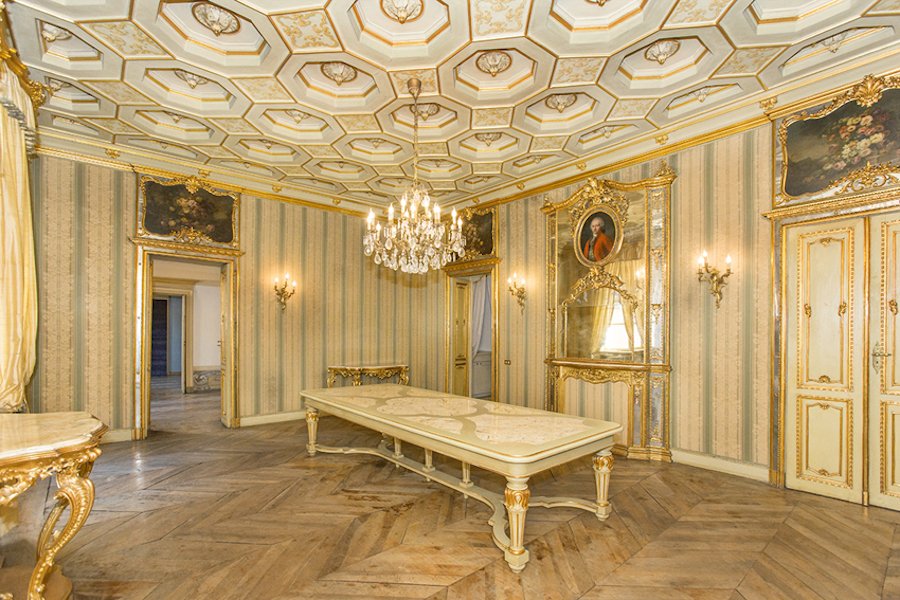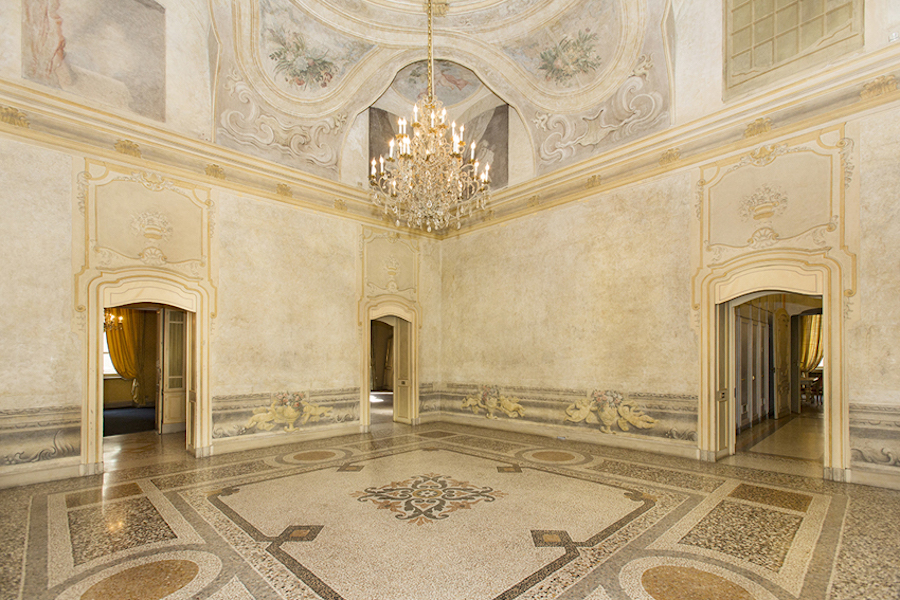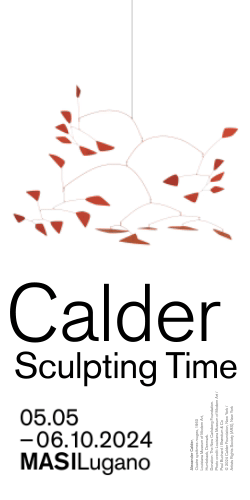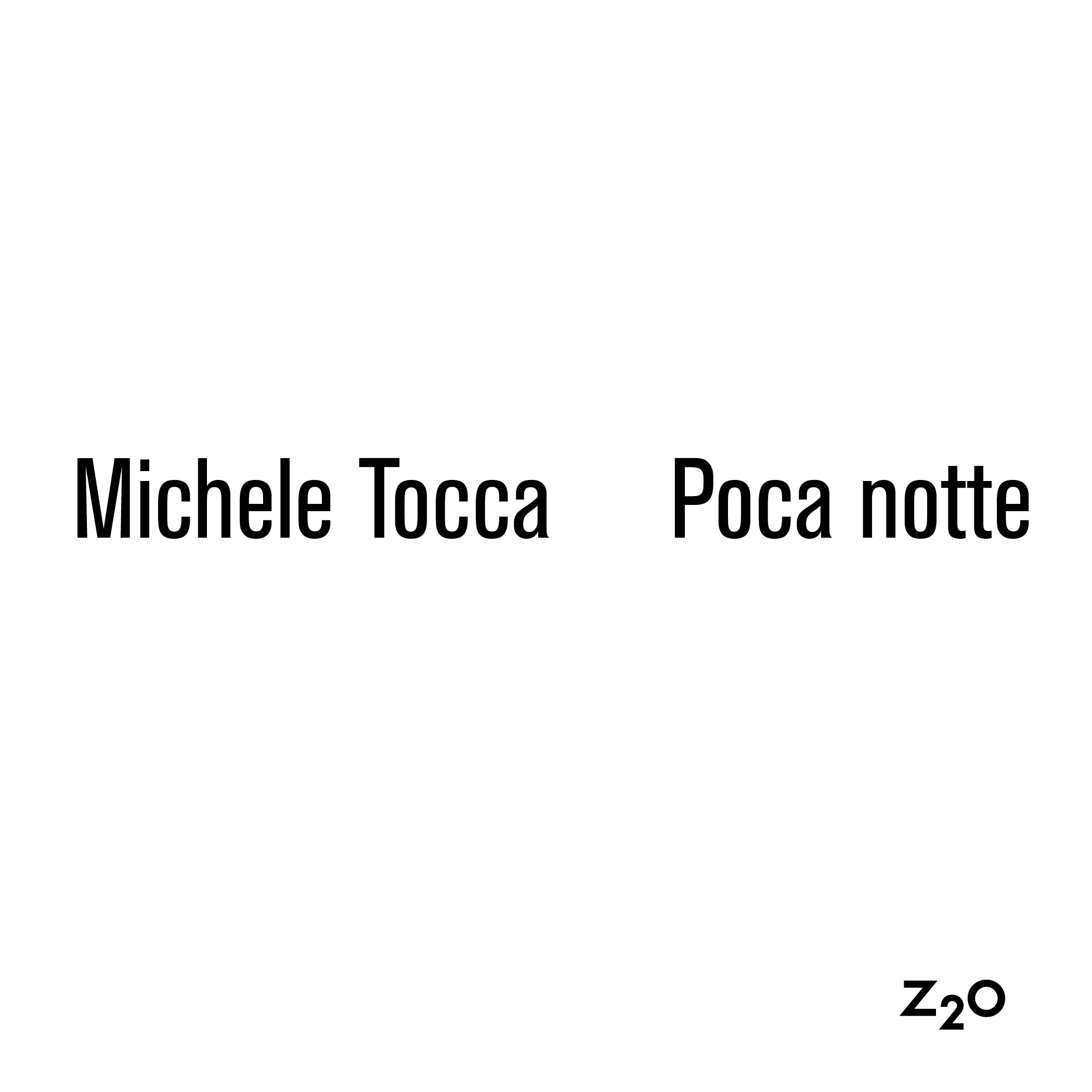English text below
La prossima edizione che si svolgerà dal 2 al 5 novemebre a Palazzo Saluzzo Paesana (Torino) si presenta con delle novità, sia nel programma che nel percorso visitabile. Alla sua seconda ‘prova’, DAMA amplia gli spazi, ospita un nuovo curatore del Live Programma, João Laia, e presenta la nuova sezione GUEST, concepita in collaborazione con MEF – Museo Ettore Fico, che punta a supportare una galleria con la copertura dell’intera fee di partecipazione.
Ricordiamo le caratteristiche di DAMA: è un progetto collaborativo e indipendente dedicato a un gruppo di gallerie emergenti internazionali invitate a presentare il lavoro di un artista in pieno dialogo con la sede, per offrire una mostra a cura di Domenico de Chirico e consentire un approccio più calibrato alle relazioni e al networking. Da questa edizione una nuova sala sarà dedicata alla proposta di uno spazio NO–PROFIT internazionale che si è contraddistinto per il suo programma di ricerca.
Seguono alcune domande a Giorgio Galotti, fondatore di DAMA —
ATP: Alla luce della prima edizione, come avete sviluppato il secondo appuntamento di DAMA?
Giorgio Galotti. Noi consideriamo quella passata come un’edizione zero, in quanto organizzata in meno di 4 mesi di lavoro, da Novembre scorso abbiamo continuato il lavoro ininterrottamente. Ad oggi però ci sembra opportuno non creare troppe sovrastrutture per non rendere l’organizzazione macchinosa come quella di una fiera dalla cui idea vorremmo allontanarci. Per questo siamo rimasti volutamente piccoli nonostante ci erano state proposte sedi più grandi dove avremmo potuto inserire il doppio delle gallerie. Abbiamo dato priorità alle relazioni instaurate, come promesso agli esordi, e a quelle realtà con cui era nato il dialogo dal primo anno. L’entusiasmo di far parte di questo gruppo è un potenziale a cui riserviamo molta attenzione.
ATP: Quali sono stati (se ce ne sono stati) i punti deboli della prima edizione che avete potenziato?
GG: Ogni start-up ha i suoi punti deboli ma qui ti riporterei esempi riduttivi. Alla fine della scorsa edizione abbiamo chiesto ad ogni galleria partecipante cosa era andato e cosa no, dalle loro dichiarazioni abbiamo preso spunto per colmare le lacune. Le gallerie vanno protette così come gli artisti, e siccome stiamo lavorando per noi stessi cerchiamo di farlo al massimo.
ATP: Quanto la location, Palazzo Saluzzo, ha influenzato o potenziato i progetti che presenterete?
GG: Direi abbastanza visto che ogni galleria ha lavorato con l’artista in modo chirurgico su ogni stanza. Sedi come queste non lasciano spazio a improvvisazioni, le gallerie hanno portato le esatte opere che dovevano esporre nel punto stabilito con il curatore, Domenico de Chirico. Chi ha ammiccato lo scorso anno all’approccio da fiera non è stato confermato. Per questo continuo a sottolineare la lontananza dal concetto fieristico. Chi partecipa a Dama non lo fa per una scelta di mercato ma di opportunità e di sfida. E’ bello leggere oggi alcuni curriculum di artisti dove tra le mostre compare Dama.

ATP: Quali sono le novità su cui avete puntato per questo secondo anno di attività?
GG: Non è stato facile rendersi conto che non dovevamo crescere troppo in termini di partecipazioni, eravamo 10 gallerie nel 2016 e saremo 12 quest’anno. Abbiamo dato più spazio al programma Live, curato da Joao Laia, grazie al sostegno della Compagnia di Sanpaolo. Un programma a mio avviso all’altezza di un museo e spero che Joao abbia la stessa sorte di Lorenzo Balbi, che aveva curato il Live lo scorso anno e ora ha la possibilità di dirigere un museo importante come il MaMbo.
Inoltre abbiamo aperto una finestra di dialogo con le realtà No-profit che fanno un’ottima ricerca ma spesso non hanno la possibilità di entrare in contatto con una platea più ampia perché sprovviste di budget consistenti per partecipare a una fiera. Quest’anno ne inseriremo due, uno da Vienna e uno da New York.
Infine, insieme al Museo Ettore Fico, abbiamo creato Guest a cui tengo moltissimo perché è una formula di sponsorizzazione lungimirante che punta a premiare una galleria con la partecipazione gratuita e senza offrire qualcosa in cambio al Museo. Vorremmo che questa formula si potesse estendere ad altre aziende o istituzioni in modo da aiutare le gallerie a non dover più pagare una fee di partecipazione. Sono certo si possa fare e ringrazio Andrea Busto e Giuseppe Galimi per creduto per primi in questa possibilità.
ATP: In merito alla relazione con il nuovo direttore di Artissima, Ilaria Bonacossa, avete instaurato un dialogo tra le due fiere che si svolgono negli stessi giorni?
GG: Da parte nostra c’è piena apertura, ma effettivamente non so se avrebbe senso dato che le impostazioni sono diametralmente opposte. Dama è nata come reazione a un sistema in crisi che colpisce in primis le gallerie obbligate a partecipare alle fiere per avallare le regole di un mercato fuori controllo. La ricerca di vie indipendenti è lo stimolo per fare bene, la nostra alternativa è non fare nulla.
Artissima fa numeri sui metri quadrati a disposizione, come tutte le fiere. Se i loro 50.000 visitatori si riversassero su Dama sarebbe impossibile gestirli, oltre ad essere fuori dalle nostre intenzioni. Dama lavora sul recupero delle relazioni, sul rallentamento dei tempi e su sistemi collaborativi.
Inoltre negli ultimi anni sono stati commessi errori di interpretazione della città a mio avviso, credendo che Torino potesse avvicinarsi agli standard di Londra, Parigi o Basilea e su questa idea la fiera si è formata con un’identità internazionale diventando uno strepitoso catalizzatore per il territorio, ma oggi come oggi l’unico dialogo che dovrebbe cercare Artissima è con Miart, ormai le differenze tra le due fiere si sono ridotte di molto e questo non aiuta le gallerie e gli sponsor.
Arcade -London / John Wallbank
Berthold Pott – Cologne / Colin Penno
BWSMX – Mexico City / Morgan Mandalay with Kim-Anh Schreiber
Giorgio Galotti – Turin / Adam Cruces
Hawaii-Lisbon – Lisbon / Daniel Van Straalen
Leto – Warsaw / Honza Zamojski
Lily Robert – Paris / Jonas Wijtenburg
Tobias Nahering – Leipzig / Sebastian Burger
Neochrome – Turin / Alexandra Noel
Neumeister BarAm – Berlin / Sinae Yoo
Svit – Prague / Jimena Mendoza with Ajit Chauhan
Weiss Berlin – Berlin / Elif Erkan
+ No-profit
Meyohas – New York / Virginia Lee Montgomery
Pina – Vienna / Sasha Auerbakh

Interview with Giorgio Galotti, the founder —
ATP: After the first edition, how did you develop the second appointment of DAMA?
Giorgio Galotti: We consider the previous one as a zero edition that was organised in less than 4 months. From last November we kept working with no rest. However today we don’t want to create too many superstructures typical of an art fair’s mechanism from which we want to take the distance. We are deliberately small despite we were asked to occupy bigger venues where we could have invited much more galleries. As promised at the beginning, we have given priority to the relationships established so far, and to the protection of those realities with whom the dialogue was born from the first year. The enthusiasm of being part of this group is a big asset and we want to look after it.
ATP: What were (if any) the weaknesses of the first edition that you have been upgrading?
GG: Every start-up has its weaknesses, but here I would only point out reducing cases. To give you an example, at the end of last edition we asked every exhibitor what was good and what was not, and from their answers we tried to fill the gaps. Galleries have to be protected as well as artists and since we are working for ourselves, we want to do our best.
ATP: How much has the location, Palazzo Saluzzo Paesana, influenced or strengthened the projects you will present?
GG: Enough considering that each gallery has been working surgically with the artist on each room. These kind of spaces do not allow improvisations, galleries have brought the exact works established with the curator, Domenico de Chirico. Those who winked last year to a fair approach haven’t been confirmed this year. This is why I keep pointing out the distance from a traditional art fair concept. Dama’s participants don’t take part of it because of market choices but rather for opportunities and challenges. It’s great to know that in some of artists’ curriculum there is Dama among their exhibitions.
ATP: What are the news you will present for this second year of activity?
It wasn’t easy to understand that we shouldn’t have to grown too much in terms of participation, we were 10 galleries in 2016 and we will be 12 this year. We have given more space to the Live program, curated by Joao Laia, thanks to the support of Compagnia di San Paolo. In my opinion this programme can play in the leagues of a museum and I hope that Joao will have the same fate as Lorenzo Balbi, who curated last year’s Live programme and today has the opportunity to lead an important museum such as MaMbo.
We opened a dialogue with non-profit spaces, most of them are bringing on unexceptional researches but often they don’t have the opportunity to get in touch with a big audience because they have no budget to attend a fair.
This year we will present two of them, from Vienna and New York.
Lastly, together with Museo Ettore Fico, we have created ‘Guest’, a really important award to me because it’s a sponsorship way that aims to reward a gallery with free participation without offering anything back to the Museum. We would like to extend this idea to other companies or institutions in order to wave the galleries participation fee. I want to thank Andrea Busto and Giuseppe Galimi for making it happen.
ATP: Regarding the relationship with the new director of Artissima, Ilaria Bonacossa, did you established a dialogue between the two fairs taking place in the same period?
We are wide open, but I’m not sure a collaboration would make any sense given that settings and planning are utterly opposed. Dama was born as a reaction to a system in crisis that hit the galleries first, forcing them to attend fairs to endorse the rules of a market which is clearly out of control. Seeking independent ways is an incentive to do well, our choice is to do nothing.
Artissima makes numbers on available square meters, such as the rest of the fairs. If its 50,000 visitors came to Dama, it would be impossible to manage them all and in any case it wouldn’t be our goal. Dama works on relationships, on a slowdown time and a collaborative system.
Furthermore, I believe that over the last few years, some mistakes have been made in the interpretation of the city of Turin, thinking that it could have reached London, Paris or Basel’s standards and the fair, was shaped on this idea of international identity becoming an amazing catalyst for the territory, but nowadays, the only dialogue Artissima should look for is with Miart. The differences between the two fairs have been reduced dramatically and this approach doesn’t help galleries and sponsors.













